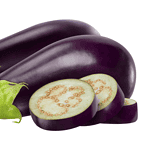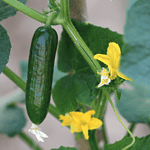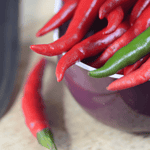Do you love the taste of fresh basil? If so, you’ll be excited to learn about some of the best Basil companion plants to grow in your garden! Basil is a delicious herb that can be used in many dishes. It’s also easy to grow and makes a great addition to any garden.
However, did you know that Basil can be even more flavorful when grown with other plants? In this blog post, we will discuss some of the best Basil companion plants to grow in your garden!

Basil is one of the most popular herbs to grow in gardens because it’s easy, has a great flavor, and can be used in many different ways. But did you know that there are certain types of basil that will grow better when planted near each other?
Basil loves tomatoes, and so do we! Basil is also great for attracting pollinators like bees (which help our gardens thrive).
Basil is a good companion plant because it attracts beneficial insects such as bees, ladybugs, and lacewings. Basil can also deter aphids from eating your plants by emitting a strong scent.
If you want to have an effective companion planting with basil, there are several things you need to know. You must first understand if the plants are compatible and which ones to avoid; otherwise, your basil/other plants get harmed.
Therefore, choose plants that will benefit rather than hurt each other e.g. Go for those with similar water requirements, or those that enhance each other maybe; providing shade, offering protection from pests and insects, fixing nutrients in the soil, etc.
By doing this, you will be saving yourself frustrations arising from poor crop performance and a waste of time and money.
Basil is an easy-growing herb for both vegetable and herb gardens. This herb has fragrant, peppery leaves and is mostly used on fresh salads, pasta sauce, or pizza.

It is a great companion plant to have in your garden as it is good at attracting beneficial insects for other plants as well as deterring harmful ones.
On the other hand, your basil could benefit from other crops growing near it.
For example, some crops such as beans are good at improving soil nutrients thereby keeping the basil well-fed and healthy. Others like chamomile and savory encourage faster growth and improve the basil’s taste. While planting marigolds around the basils help repel insect pests leaving your plants pest-free.

However, there are plants that you shouldn’t grow with basils as they may end up harming your plants. For instance, thyme, sage, and rosemary are herbs that require less water so, what’s normal for these herbs could be severe underwatering for basil.
Again, never plant mint with basils. Mint is considered an invasive herb with a fast and extensive root system. It hence feeds on a majority of nutrients leaving other plants around it malnourished and with stunted growth.
What Is Companion Planting?
Companion planting is a time-tested gardening method that enriches and protects vulnerable crops. Farmers and gardeners plant specific crops near each other in order to deter pests, attract beneficial insects, and stimulate growth.
What Are the Benefits of Companion Planting?
- Companion plants will either help a specific crop grow or will grow better beside a specific crop, and can do many support jobs in the garden:
- Repel insect pests. Cabbage worms, cucumber beetles, Mexican bean beetles, carrot flies, cabbage moths—all kinds of pests can plague vegetable gardens. Many companion plants (like marigold flowers, catnip, and rue) repel specific pests and should be planted near certain crops to keep them pest-free.
- Attract beneficial insects. Pollinators like bees and ladybugs can use a little encouragement to visit vegetable gardens and pollinate the crops. Gardeners often plant attractive plants like borage flowers to encourage pollinators to visit.
- Improve soil nutrients. When crops grow, they take up valuable nutrients from the soil—leaving the gardener to do a lot of work at the end of the season to renew the soil’s nutrients.
- However, there are many companion plants (like bush beans and pole beans) that add nutrients like nitrogen back into the soil, helping keep other plants healthy and well-fed.
- Encourage faster growth or better taste. Many companion plants (like marjoram, chamomile, and summer savory) release specific chemicals that encourage faster growth or better taste in the plants around them, leading to quicker and better harvests for home gardeners.
- Provide ground cover. Plants that spread low across the ground (like oregano) serve as a blanket over the soil, protecting it from the sun and keeping it cooler for plants that need it.
- Provide necessary shade. Plants that grow tall and leafy (like zucchini and asparagus) can provide welcome shade for sun-sensitive plants beneath them.
- Serve as markers. When growing slow-growing plants, it can be difficult to tell where the rows will be while you’re waiting for the seeds to sprout. Gardeners often use fast-growing plants (like radishes) interspersed with the slow growers in their rows to delineate where the slow growers will be.

Here are some of our favorite Basil companion plants to grow in your garden:
Tomatoes

Not only do tomatoes work well with basils on a dinner plate, but they are also excellent vegetable garden companions. Basils and tomatoes require similar amounts of water and light hence, easy to grow them as companions.
The strong aroma of basils helps repel hornworms and flies thus improving the health and yield of tomatoes.
Apart from this, some gardeners believe that there is an improvement in taste for both crops when grown together. Plus, growing these two crops together allows you to harvest them at the same time.
Peppers

This is another perfect match for your basils. Since peppers love humidity, the basils work on trapping moisture and heat from the atmosphere leading to enhanced growth in peppers.
Both basil and pepper are the best pest repellents that work together to deter some common garden pests such as flies, and mosquitoes. Plus, growing basils next to peppers boost their flavor as the pepper leaves provide a bit of canopy for the basil thereby protecting it from harsh weather conditions.
In an aesthetic view, these two plants are good companions because the dark purple/green leaves of basil form an eye-catching backdrop for the colorful peppers.
Eggplant

Eggplants are susceptible to insect attacks, especially mealybugs, garden moths, and aphids. But when grown together with basils, they are protected from insect-pest invasion since the pungent scent from basil repels these insects.
The performance and health of eggplants are therefore enhanced resulting in higher yields.
Parsley

Parsley is a very popular herb among gardeners. A classic garnish on so many dishes, it’s especially useful to have on hand, and since cutting stalks only encourages new growth, there’s no reason not to give parsley some space in your garden. It’s a well-known rule that some plants grow better next to others, however, and with parsley, there’s no exception. Keep reading to learn more about plants that grow well with parsley, as well as those that don’t.
Companion planting is the age-old trick of knowing which plants grow better next to other plants. Some plants encourage certain others to grow, while others inhibit them. Plants that are mutually beneficial are called companions.
Lavender

Lavender needs full sun and well-drained soil to grow best. In hot summer climates, afternoon shade may help them thrive. Lavender grows best in low to moderately-fertile soils, so don’t amend the soil with organic matter before planting. Lavender performs best in neutral to slightly alkaline soils.
With its bushy evergreen foliage and flower spikes ranging from deep purple flower buds to a dusky gray-blue, lavender’s great strength is its intense fragrance, which simultaneously attracts pollinators and detracts wildlife that may otherwise take great interest in the surrounding vegetable and herb garden.
Chamomile

Chamomile is an easy-to-grow flowering herb and a good companion to many herbs including basils. This herb is believed to increase the concentration of essential oils in basil and other herbs.
There are two types of chamomile varieties; Roman and German chamomile. With the German one being the best to grow with basils. It is an annual variety that requires less care and maintenance as compared to the Roman chamomile.
And just like basils, it grows for a year and dies off on its own regardless of how best you take care of it.
Marigolds

Do you want to maximize the aromatic shield for your basil? Go for marigolds! A combination of these two crops offers the most ideal natural pest repellent. Just make sure to plant them close to each other for effectiveness in pest control.
Other than that, marigolds are usually small and bushy and grow up to 12 inches (not more) thereby, a good choice for an attractive border for your herb garden.
Moreover, marigolds are great at attracting and feeding pollinators and they continue to feed these insects with nectar even late in the season when almost all garden flowers are gone.
In addition to this, the marigolds, especially the French variety, enhance the growth of basils by producing a chemical from their roots that offer protection against pests for years even after the marigolds are gone.
However, you should be careful not to plant the Mexican marigold as it produces a stronger version of this chemical which can inhibit the growth of certain herbs.
When companion planting marigolds with basils, you can either plant basil first, and then dig a hole for the marigold plant. This should be about 18 to 24 inches between the marigold and the basil plant.
The gap is close enough for the basil to benefit from the marigold and there is enough space for the basil to grow.
Or, plant marigold seeds around and in between basil plants, as their germination speed is quite fast. Upon reaching approximately 2 to 3 inches tall, thin out the marigolds to avoid overcrowding.
Water both crops when the soil feels dry (or as needed depending on weather conditions) and never allow the soil to be soggy otherwise, your plants will develop rots
Borage

Borage is an annual flowering herb with purple flowers. It is a great choice for both indoor and outdoor herb garden additions especially when you want a more colorful yet edible garden.
This is not the only reason you should grow borage together with your basil. Having this herb next to basil plants is beneficial in that it attracts pollinators to the garden and repels earthworms.
Plus, borage can extract essential minerals from deep in the soil and bring them closer to the surface for the basil’s roots to absorb them.
Oregano

This is another easy-to-match companion for basils and several other herbs. It is a perennial herb that’s best known for its ability to attract beneficial insects and repel harmful pests.
Similar to basil, oregano is a fairly low-maintenance herb that grows well under partial to full sun and needs watering once the soil dries up.
To start oregano from cuttings to be planted with basils, cut the stem above the node and place it in water. Leave it until the roots emerge (this takes a few weeks). Then, place it in the soil alongside your basils and let it grow.
Oregano can tolerate some over/under watering so, water it just like basil and allow the soil to dry between watering.
Marjoram

Marjoram is a perennial herb similar to oregano both in flavor and its use in various dishes. It is a resistant herb that grows easily with basil’s light (6 to 8 hours of sunlight) and water requirements.
This herb is a good companion for basil and many other herbs and plants. Marjoram is excellent at attracting useful insects that feed on harmful pests such as aphids which are a big problem in basil production.
You can easily find potted marjoram plants in stores and transplant them next to your basil in well-draining potting soil. This is the easiest way of starting a marjoram plant next to your basil
Asparagus

Asparagus is a perennial flowering plant whose young shoots are used as a spring vegetable. This plant grows well with basil and each of them enjoys some benefits from the other.
When growing basil along with asparagus, the basil enhances the growth of asparagus as well as deters asparagus beetles while attracting good insects. On the other side, the asparagus protects the basil from aphid damage by attracting ladybugs that feed on the aphids and other pests.
Root Vegetables
The green leafy tops of most root vegetables are particularly prone to soil-boring pests. This is why growing basils with root vegetables like beets, carrots, radishes, and parsnips is beneficial in that the fragrance from basil helps deter pests from the surrounding area.
The following are plants you should not plant in the same pot as your basil:
| Best Basil companions | Worst basil companions |
| Marjoram | Rosemary |
| Borage | Rue |
| Chamomile | Mint |
| Oregano | Sage |
| Tomato | |
| More for outside garden eggplants, beans, asparagus, cabbage, beets, peppers, potatoes |
- Mint: This is an invasive herb. This means that its roots will develop fast and wide, overtaking the majority of nutrients in a container. Have a look at its massive roots. Do you know what will happen? All the other herbs planted in the same pot will remain without nutrients, and their growth is severely stunted.
This is a quite well-known problem among gardeners, even for outdoor applications.
- Rosemary, Thyme, and Sage: these herbs require way less water than basil. Hence, what is normal water for rosemary it is a severe underwatering for basil;
- Rue: this herb is noticed to inhibit the growth of basil through the production of particular chemicals through its roots.
Additional Resources
https://www.almanac.com/planning-companion-planting-garden
https://www.almanac.com/companion-planting-guide-vegetables
Conclusion
Companion planting with basil is a great way to keep pests away from your other plants, while also providing your garden with an attractive herb. If you are looking for ways to improve the health of your garden, try companion planting with basil. What other plants do you think would make good companions for basil?
While many say that companion planting with basil isn’t necessary, I highly recommend you plant it alongside one. This can improve your harvest substantially. It could also deter pests and other insects that harm the yield of the basil crop.
Even so, you need to understand the growing conditions of each and go for those with common needs as basils. This will help you avoid cases such as over/under watering, little or excess fertilization, and many other things that might affect either of the plants.
With the information I’ve provided, I believe that you now have full knowledge of companion planting, its advantages, as well as what crops are good companions. It’s now your chance to enjoy a healthy and successful garden through companion planting.
Latest Post
- How to Plant Mushroom Seeds for Maximum Germination

- How to Plant Lettuce Seeds for Maximum Germination

- How to Plant Kale Seeds: A Step-by-Step Guide to Maximum Germination Success!

- How to Plant Eggplant Seeds: A Step-by-Step Guide to Maximum Germination Success!

- How to Plant Cucumber Seeds for Maximum Germination

- How to Plant Chili Pepper Seeds for Maximum Germination





